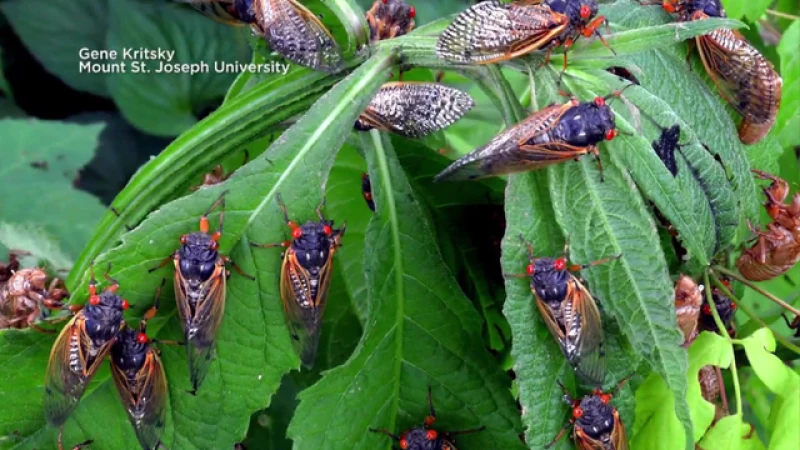Trillions of periodical cicadas will emerge from the ground this spring, bringing with them their loud buzzing and molted exoskeletons. Here's where you will be able to see cicadas in the U.S.
When are the cicadas coming in 2024?
There are two groups of periodical cicadas – those that emerge every 13 years and those that emerge every 17 years. For most of their lives, cicadas live underground and then emerge once the soil reaches 64 degrees. They are expected to arrive in mid-May.
This year, both the 13-year and the 17-year cicadas will emerge, arriving in numbers that have not been seen in generations.
They mate, molt and then die, leaving behind their offspring to burry themselves into the soil and lay dormant until their brood's next cycle.
Where will cicadas be in 2024?
The 13-year cicadas, called Brood XIX, will emerge in Georgia and the Southeast. The 17-year cicadas, called Brood XIII, will appear in Illinois. This will be the first time since 1803 that two broods emerged at the same time. The next time this happens will be 2037.
Experts are calling the simultaneous emergence of two cicada broods "cicada-geddon," but the real spectacle is yet to come. In 2076, the convergence of the XIX and XIV broods will create a massive event known as "cicada-palooza," according to University of Connecticut cicada specialist John Cooley.
While the upcoming emergence is expected to be peaceful, the sheer number of cicadas is staggering, with estimates ranging in the hundreds of trillions to quadrillions. This translates to an average of 1 million cicadas per acre across millions of acres.
However, some of these cicadas may be affected by a fungal pathogen called Massospora cicadina, which induces hyper-sexuality in the insects. This sexually transmitted fungal infection transforms the cicadas into "zombie cicadas," characterized by a chalky, white plug bursting from their bodies and causing their genitals to detach. Researcher Matthew Kasson notes that the impact of this fungus on other wildlife, animals, or humans is still unknown.
"The infected cicada continues its normal behaviors, such as mating, flying, and walking on plants, despite a third of its body being replaced by fungus. It's truly a bizarre phenomenon," explained Kasson, an associate professor at West Virginia University.
Discover Where to Witness the Cicada Emergence Across the U.S.
The upcoming dual brood cicada emergence is expected to be most prominent in regions of Illinois, Iowa, Kentucky, Missouri, Arkansas, Tennessee, Mississippi, Alabama, Georgia, South Carolina, North Carolina, and Virginia.
A visual representation provided by the U.S. Department of Agriculture illustrates the anticipated emergence of both the 13- and 17-year cicada broods spanning from 2013 to 2029.






